Have you been searching for the perfect addition to your home in the High Desert? Look no further than our Complete Guide to High Desert Landscaping! We have all the information and tips you need to turn your property into a stunning oasis. With full details on everything from succulents, cacti and other desert plants, to rock gardens, fire pits, and more, this guide has something for everyone looking for high desert landscaping ideas.
What is a high desert climate?
A high desert climate is a type of arid or semi-arid environment in which temperatures are hot during the day but can drop significantly at night. This type of climate is typically found in areas that have limited water availability, and because of this, it requires special considerations when it comes to landscaping.

In order to create an attractive, yet low maintenance landscape design for your home in a high desert climate, there are several things to consider. These include choosing drought-resistant plants and grasses, utilizing mulch and other ground covers, and selecting hardscape elements like stones and pavers that can withstand extreme temperatures. With these tips in mind, you’ll be able to create a beautiful outdoor space without having to worry about extra care or maintenance.
Basic Principles of High Desert Gardening
High Desert Gardening is a great way to make your yard look amazing. Whether you want to add some curb appeal or just want to create a beautiful outdoor space for yourself, the high desert has plenty of options. Here are some basic principles that will help you get started on your High Desert garden:
- Choose plants that are native to the area – Many plants have evolved over time and can thrive in the climate and soil conditions of high desert regions. plants require less water and fertilizer than non-native varieties, which can save you both money and effort in maintenance. Additionally, they also tend to attract more wildlife into your yard such as birds, butterflies, and bees!
- Make sure you consider the climate – High desert regions tend to be very dry and hot in the summer, with temperatures reaching over 100 degrees. You’ll want to choose plants that can handle this type of weather and also be aware of when you water them. Overwatering can result in rotting roots or leaves falling off due to too much moisture.
- Take advantage of water-saving techniques – Utilizing methods such as mulching, drip irrigation, and rain barrels will help conserve water and reduce your need for supplemental irrigation. Additionally, grouping similar plants together will make it easier to provide them with adequate care since they all have similar needs for light, soil moisture, etc.
- Invest in drought-tolerant varieties – Whether you’re planting flowers, vegetables, or trees, try to select varieties that are drought-tolerant. These plants are much hardier and can withstand extreme temperatures and lower amounts of water. This will save you from having to constantly monitor their needs and help ensure they stay healthy throughout the year.
Design
Designing a high desert landscape isn’t as difficult as it may seem. With the right combination of plants, soil, and climate, you can create a beautiful outdoor space that requires minimal maintenance. Here are some tips to get you started:
- Choose drought-tolerant plants. When selecting plants for your high desert landscape, consider ones that can withstand periods of drought and extreme temperatures. Native species like yucca, creosote bush, agave, and sagebrush typically thrive in these environments. For added color and variety, add some succulents like prickly pear cactus or aloe vera to the mix.
- Plan for water conservation. A low-water landscape will allow you to conserve resources in the high desert. Consider using drought-resistant groundcover plants and shrubs that require less water, such as juniper, yucca, mesquite, and pinyon pine. Additionally, installing a drip irrigation system can help you save water by directing it directly to the roots of your plants.
- Utilize shade when possible. High deserts are often extremely hot during the summer months, so planting trees or large shrubs for added shade is a great way to protect your plants from intense heat. You should also consider grouping plants together with similar light needs — those that prefer partial sun or full shade — so they can benefit from each other’s shade.
- Incorporate native rocks and stones. Rocks and stones are not only a great way to add texture and visual interest to your landscape, they can also help retain moisture in the soil during dry periods. Native river rock or sandstone are both excellent choices for high desert landscaping.
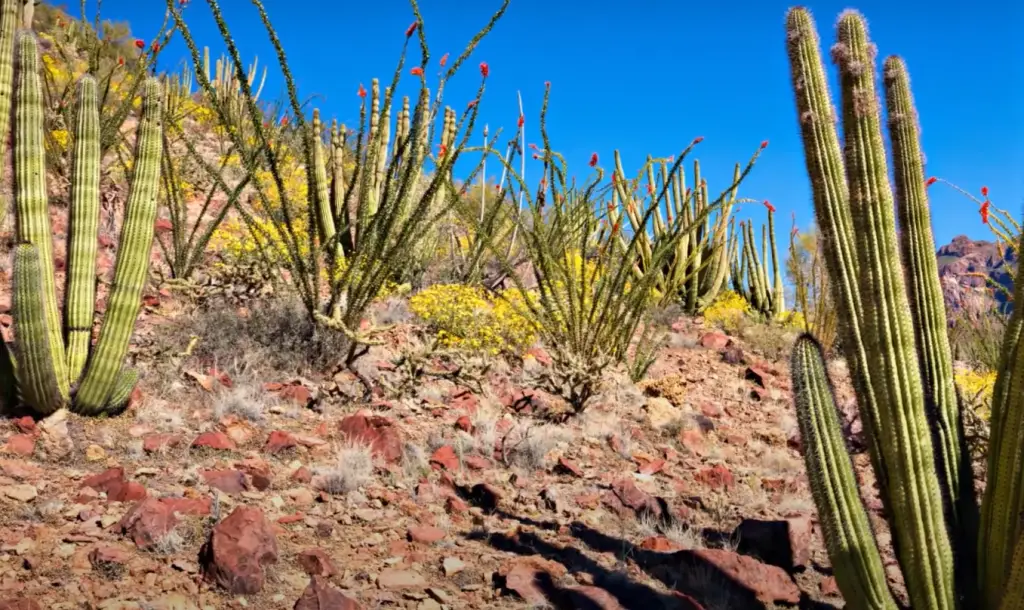
Creating a beautiful outdoor space in the high desert is possible with the right combination of plants, soil, and climate.
Soil
When it comes to landscaping in the High Desert, soil preparation and plant selection are two of the most important elements. The best way to start is by testing your soil’s pH level. Most plants thrive in a range of 6.0-7.5 but you can find specific requirements for certain varieties online or at your local nursery. Once the right balance is achieved through amendments, fertilizers and other additives, it’s time to select the appropriate plants for your area.
Look for native species that are adapted to extreme conditions, such as heat and drought resistance. Other plants may require more maintenance but if they suit your style then go ahead! A combination of native plants with a few ornamental varieties can create a stunning Desert oasis.
If you have animals or small children, be sure to select plants that are not poisonous and are safe for these areas. This is especially important when selecting cactus varieties as some can be dangerous if touched. Lastly, choose landscaping materials wisely to ensure that they stand up to extreme temperatures and reflect the sun during hot days.
With careful consideration, soil preparation and plant selection will give your High Desert landscape a beautiful and vibrant look. With proper maintenance and upkeep, it’ll remain flourishing for years to come!
Limited Turf Areas
High Desert Landscaping is all about finding smart and practical solutions to utilize the limited resources available in this area. One of the best ways to save on water usage while still having a beautiful outdoor space is to limit the turf areas in your landscape. Grass requires a lot of water, so it’s wise to choose other alternatives such as low-water plants and rocks instead. There are plenty of options when it comes to these materials, allowing you to create an attractive outdoor oasis that uses little water. Not only will it look great, but you won’t have to worry about spending too much time or money maintaining it either!
Pick your Plants
When it comes to desert landscaping, picking the right plants is essential. After all, if you don’t get the right plants for your High Desert landscape, nothing else will matter!
Choose a variety of cacti and succulents that are suited for dry regions. Consider using native plants as they are better adapted to their environment than non-native varieties. And be sure to select plants with different shapes and sizes to provide more visual interest in your garden.
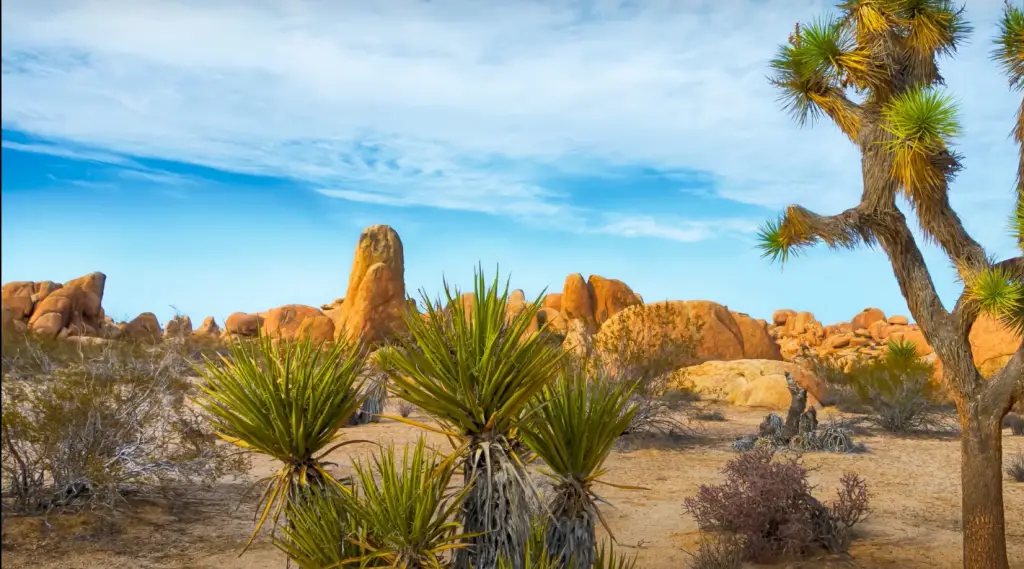
You can also look into drought-tolerant grasses like buffelgrass or other low-water options like creeping junipers, yucca, and Mexican thread grass. When planting these kinds of species, remember to group them together so that they can help each other conserve water.
Finally, don’t forget to select colorful flowering plants like lantana and desert marigolds for a pop of color in your garden. Just keep in mind that these may need more water than the other plants, so be sure to plan ahead for their needs. With the right plant selection, you can create a living tapestry that will stay beautiful even with less water!
Irrigation
When it comes to landscaping in a high desert environment, irrigation is an important consideration. Plants need water to survive and thrive, and while they may be able to withstand some periods of drought, they still need the right amount of water at the right time. Installing an irrigation system can help you provide your plants with the necessary moisture without wasting too much on wasteful runoff or evaporation. You should also consider adding mulch or other organic materials around your plants to help them retain moisture longer. With proper planning and installation of an irrigation system, you can ensure that your plants will get just enough water for their needs.
Mulch
Mulch is a great way to add color and texture to your high desert landscape. It also helps trap moisture in the soil, which is especially beneficial in arid climates. Rock mulches are popular with desert dwellers, as they provide excellent insulation from heat while still allowing the soil underneath to breathe. Wood chips can also be used, but they should be avoided if the mulch may come into contact with bare skin or clothes. To keep wood chips looking their best, it’s important to replace them every few years.
This will help keep weeds out and conserve moisture throughout the summer.Maintenance
One of the most important aspects of high desert landscaping is low maintenance. The harsh environment can quickly take its toll on plants, so they should be chosen with care and regularly tended to. Selecting varieties that are better adapted to the hot, dry climate can make all the difference. Additionally, it’s a good idea to use mulch or rocks around your flower beds as this helps insulate plants against temperature fluctuations and an occasional hard freeze. Finally, don’t forget to water your plants regularly – this might seem like an obvious step but it can easily be overlooked in the drier parts of the year! [1]
Deciduous trees for high desert landscaping
If you’re looking for a way to provide shade and add seasonal interest, deciduous trees are the perfect choice for high desert landscaping. Deciduous trees lose their leaves in winter and come alive with vibrant color in spring and summer. When choosing a deciduous tree for your landscape, it’s important to select one that is adapted to the unique climate of the high desert.
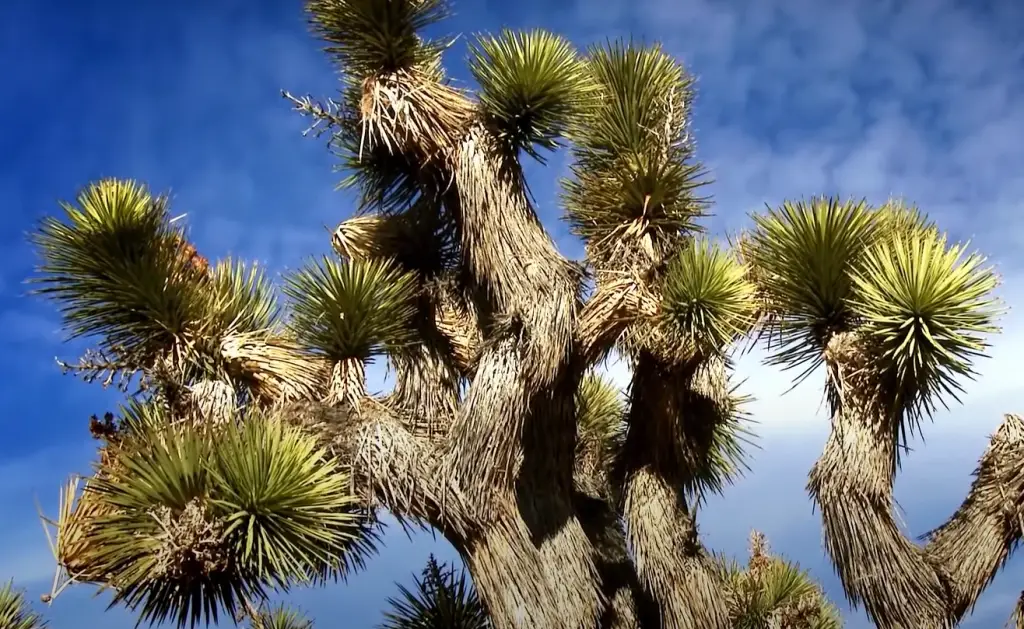
Trees like cottonwoods, maples, oaks, poplars, box elders, and elms are all suitable choices because they can tolerate both cold winters and hot summers. Consider planting them near water sources like ponds or irrigation lines so they have access to ample moisture throughout the growing season. Planting another hardy evergreen species nearby will also help protect the deciduous trees from strong winds. With proper care and maintenance, these deciduous trees will bring beauty and vibrancy to your high desert landscape!
Autumn Blaze Maple
The Autumn Blaze Maple tree is an excellent choice for desert landscaping. It loves the hot, dry climate of the High Desert, and its bright yellow foliage in autumn provides a beautiful contrast to the rugged landscape. The leaves of this deciduous tree change to a deep red-orange during fall, adding brilliant color and texture to your yard. This fast-growing tree will create shade quickly, while also providing food and shelter for wildlife. For added interest throughout the year, plant grasses or wildflowers around its base. With proper care and maintenance, you can enjoy your Autumn Blaze Maple for many years to come!
Norway Maple Emerald Queen
The Norway Maple Emerald Queen is a great choice for those looking to add some color and texture to their high desert landscaping project. This tree grows up to 45 feet tall with an equal spread, creating a wonderful canopy of shade in the yard. It produces small, yellowish-green flowers in the spring and its leaves turn yellow or red in the fall, providing brilliant color year-round. The Emerald Queen has excellent heat and drought tolerance and requires minimal maintenance when planted and cared for properly. It’s also pest-resistant and will help keep your landscape healthy year after year! If you’re looking for a colorful addition to your high desert landscaping design, consider planting the Norway Maple Emerald Queen – it won’t disappoint!
Bur Oak
Bur Oak is a great option for desert landscaping. It grows quickly and thrives in dry climates, making it an ideal choice for yards in the High Desert. The large, leathery leaves of this oak provide plenty of shade during hot summer days and its strong trunk adds stability to any garden. Its unique shape makes it a conversation starter and its deep root system helps retain moisture. You can even use Bur Oak as a windbreak by planting several trees close together. With proper maintenance, your Bur Oak will be sure to last you many years!
Douglas Fir
Douglas Fir trees are a great addition to any high desert landscaping project. These evergreen conifers have sturdy trunks that can reach up to 200 feet in height and provide much-needed shade on hot days. They need little irrigation and don’t require much care, making them an ideal choice for homeowners who want low-maintenance plants.
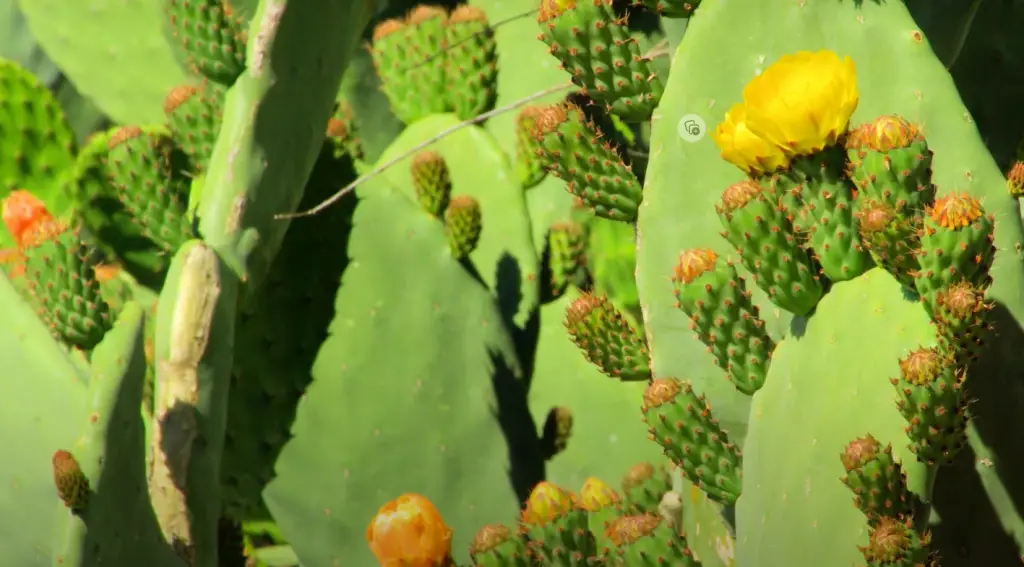
Douglas Fir trees also add a nice contrast of color to the landscape with their deep green needles. The combination of shade and colorful foliage makes these trees perfect for creating an oasis in your backyard!
Blue Spruce
Blue Spruce trees are a great way to add color and texture to any High Desert landscape. Not only do they provide shade and privacy, but they also have beautiful blue-green needles that make them stand out from other evergreens. They can tolerate the cold temperatures of high desert areas and require very little maintenance or watering. Planting Blue Spruce trees in your desert garden will also attract birds and other wildlife because of their cones and nectar-filled flowers. Use them as a focal point in your yard or plant several along driveways, sidewalks, or patios for an attractive look.
Ponderosa Pine
When it comes to high desert landscaping, Ponderosa Pine Trees and Juniper Bushes are popular choices. These trees bring a bit of texture, color and charm to any yard or garden. The dark green needles of the Ponderosa Pine Tree offer contrast against a bright blue sky and the reddish-brown bark adds some interest as well. And when planted in groups, they can create an impressive sight.
Juniper shrubs come in many varieties that range from tall evergreen trees to low growing ground cover plants. Besides providing added greenery to your landscape, they are relatively drought tolerant and require little maintenance once established. You can even incorporate Junipers into rock gardens or use them to fill in an area around a Ponderosa Pine tree.
Both of these plants will do well in most soil types and can tolerate extreme temperature changes and long periods of drought. They are also very resistant to disease and pests, so you don’t have to worry about having to treat them for any diseases or insect infestations. If you want your landscape to look its best year round, then these two plants may be the perfect choice for you.
Deciduous shrubs for high desert landscaping
Deciduous shrubs are a great option for high desert landscaping. These types of plants lose their leaves during the winter months, making them ideal for areas with cold winters and hot summers. Some common varieties include native cacti, mesquite trees, and yucca. These plants can add texture and color to your landscape while being low maintenance. If you’re looking for something more colorful, consider adding flowering shrubs such as agaves, ocotillo, or even jasmine! Not only will these add beauty to your yard but they’ll also attract wildlife like birds and butterflies. Don’t forget that deciduous shrubs do require some pruning in order to stay healthy – so be sure to budget for this in your landscaping plan.
Red Osier Dogwood or Red Twig Dogwood
A reliable and hardy shrub that adds texture, structure, and color to your high desert landscaping project. Red Osier Dogwood is a deciduous shrub with attractive red stems that contrast nicely against the green foliage of other plants in the garden.
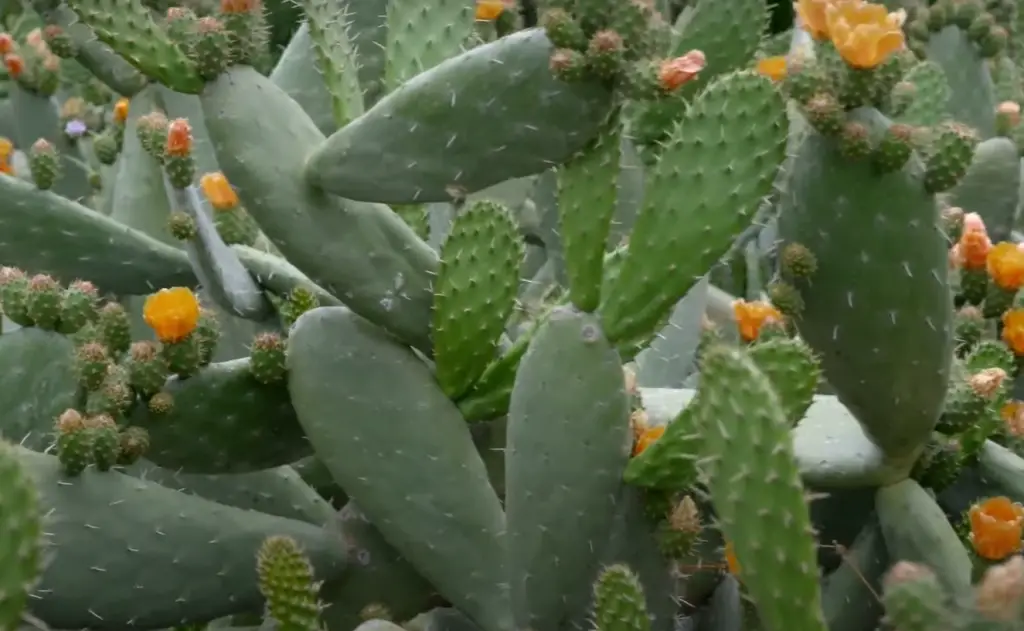
It thrives in full sun to partial shade and can tolerate heat and drought once established. The bright-red branches are most noticeable during winter months but even when not at its best, this plant will still look great as it forms an attractive mound of green foliage. It’s also a great choice for attracting birds and other wildlife!
Mock Orange
Mock orange (philadelphus lewisii) is a popular choice for high desert landscaping ideas. This bushy deciduous shrub has fragrant white flowers and can reach up to 8 feet in height and width. The blooms appear in early summer and the foliage turns a bright yellow in the fall. Mock orange does best with regular water, but once established it’s very drought tolerant — a great perk if you live in an area that gets low rainfall! Plant mock orange near windows or doors where you can enjoy its sweet scent. It also looks particularly beautiful when planted along walkways or paths as a border plant. Prune as needed to keep mock orange looking tidy.
Douglas Spirea
If you are looking for a gorgeous shrub to add some color and texture to your High Desert landscape, then Douglas Spirea is the perfect choice. This deciduous shrub has beautiful round clusters of white flowers in early summer that are sure to capture attention from across the yard. It’s also quite hardy and can stand up to the harsh conditions of the desert, making it ideal for any landscape. The Douglas Spirea grows best in full sun and well-drained soil, so make sure you give it plenty of space! With pruning every other year, this plant will stay neat and compact while providing beauty all season long. Plus, if you’re lucky enough to get a few blooms in late winter, you’ll be in for a real treat. So why not make the most of your High Desert landscape and add some Douglas Spirea to your yard today?
Greenleaf Manzanita
The Greenleaf Manzanita is a beautiful addition to any High Desert landscape. With its subtle evergreen foliage and striking reddish-brown bark, this shrub is sure to draw attention. The Greenleaf Manzanita thrives in rocky soils and can tolerate temperatures as low as -20°F, making it a great choice for the High Desert region. Plant in full sun locations with well-drained soil and water regularly during the first year of establishment. Prune occasionally to maintain desired shape and size. This shrub blooms small white flowers in late winter or early spring and attracts birds and pollinators alike. Enjoy watching your landscape thrive with the addition of this hardy species!
Big Sagebrush
The Big Sagebrush plant is a quintessential part of the high desert landscape. Native to the American Southwest, it provides a spectacular contrast to other plants in your garden. Its silvery-green foliage complements many cacti and succulents and its woody stems add texture and character to any garden. With proper care, this hardy shrub can thrive for years without much effort on your part.
Prickly pear cactus, also native to the Southwest, is an excellent addition to any high desert garden. It’s tough enough to survive almost anywhere you place it, but with some extra water and fertilizer during long dry spells, it will reward you with showy blooms. Despite its prickly exterior, it’s actually quite easy to care for and can make a great addition to any garden design. [2]
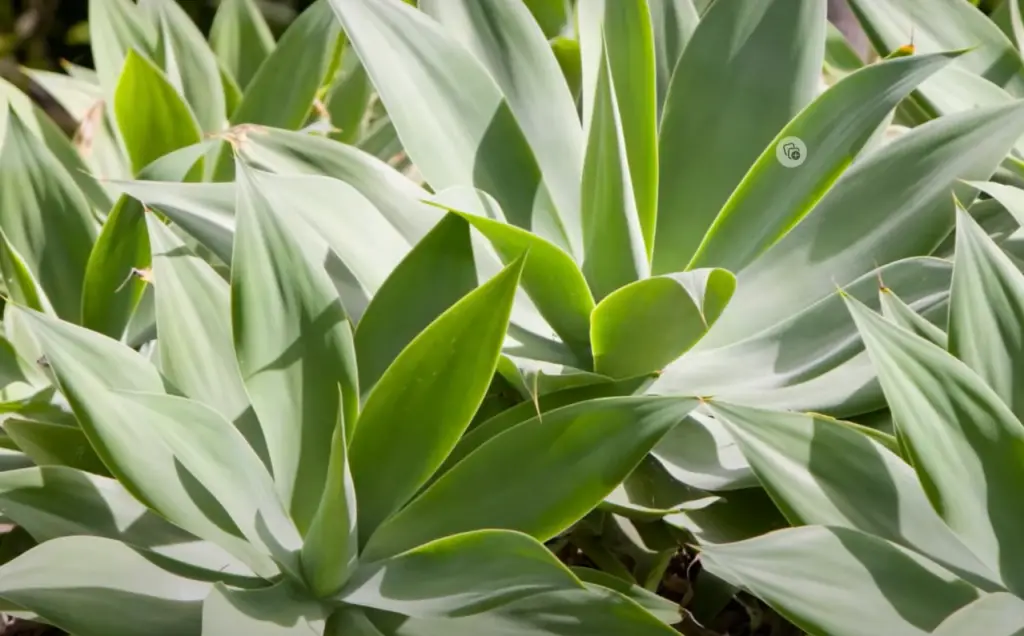
By combining these two elements of the high desert landscape, you can create a colorful and diverse garden that will last for years with minimal maintenance. So don’t be afraid to give Big Sagebrush and Prickly Pear a try in your landscaping! They may just surprise you!
Grasses that are native to high desert environments
When looking for grasses to use in your high desert landscape design, you should seek out those that are native to the region. If you don’t want to be locked into a single species of grass, you can also look at mixes of several different types. Below are some common choices:
- Little bluestem (Schizachyrium scoparium) is an ideal choice for high desert landscapes and requires very little water or maintenance. It produces fine, wiry blades that turn blue-green in spring and summer before transitioning to shades of amber during autumn.
- Sand lovegrass (Eragrostis trichodes) is another great option for those with dry, sandy soil since it has a high tolerance for drought. It grows in small tufts, ranging from 8-16 inches tall, and its light yellow flowers bloom during the summer months.
- Blue grama (Bouteloua gracilis) is one of the most drought tolerant grasses out there, making it an excellent choice for high desert landscapes. Its blue-green foliage is quite fine, growing between 6-18 inches tall.
By using native grasses in your high desert landscaping design you can create a beautiful, sustainable landscape that will last for years to come!
Blue Fescue
Blue fescue is a lovely option for landscaping in the high desert. This drought-resistant grass has attractive, fine blades that create a soft texture and mesmerizing color. The blue tints of its foliage will add some subtle interest to your garden. For best results, plant this beautiful grass in well-drained soil with partial shade or full sun. You can also use it as an edging along pathways or flower beds. It’s important to note that Blue Fescue prefers cooler climates and should be planted in spring or fall when temperatures are milder. With proper care, this ornamental grass can last you up to three years before needing replanting.
Fountain Grass
Fountain Grass is a great option for landscaping in the high desert. This ornamental grass has an arching shape and produces tufts of feathery foliage that, when it flowers, turn into fluffy plumes. It’s a low-maintenance plant, making it perfect for busy homeowners who don’t have a lot of time to devote to gardening.
This drought-tolerant grass can endure dry conditions in the high desert with minimal water and fertilization requirements. Plant several clumps of Fountain Grass near each other and enjoy watching them sway from their tips as the wind passes by! With its impressive height, this hardy grass is perfect for creating a beautiful backdrop in any garden. Plus, its low maintenance and drought tolerance make it an easy choice for busy homeowners who don’t have time to devote to yard work. Whether you’re looking for a simple way to add color and texture to your landscape or searching for the perfect backdrop for your backyard, Fountain Grass is sure to be a hit!Perennials for high desert landscaping
Perennials are a great way to inject color and texture into your high desert landscaping. Look for species that can survive the desert’s harsh environment, such as agave, yucca, and cacti. Flowers like daylilies, lupines, poppies, lavender, and verbenas will also thrive in the arid conditions of the high desert. To add more visual interest to your garden design, choose plants with varying shapes and sizes. For example, mix different types of succulents together with some tall grasses or flowering shrubs. This is a great way to create an eye-catching focal point in your outdoor space.
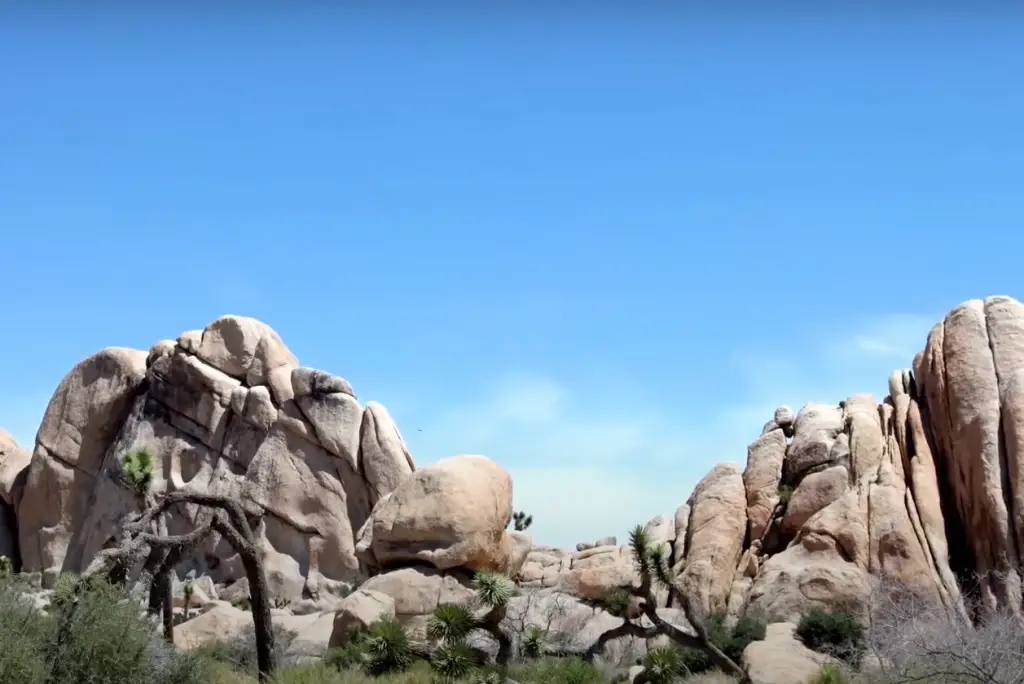
Additionally, don’t forget to include perennials that attract native birds and butterflies, as this can add a unique touch to your landscape. By planting the right perennials for the high desert climate, you’ll be able to enjoy beautiful blooms year after year.
FAQ
How do you landscape in the desert?
When landscaping in the desert, it is important to select plants and materials that are native to the area. Many cacti and succulents can be used as ground cover or as a part of a rock garden. It is also important to choose plants that require minimal water, such as drought-resistant trees, shrubs, and flowers. Rocks and gravel can be used to create pathways and add texture to the landscape design. Furthermore, adding mulch around plants will help retain moisture and keep weeds at bay. [3]
What types of landscapes are in the desert?
The desert landscape is typically sandy or rocky, with sparse vegetation and wildlife. The plants that do grow in the desert are mostly drought-resistant succulents and cacti, which require very little water to survive. In addition to these hardy plants, you may also find shrubs, grasses, and wildflowers scattered throughout the desert terrain. Of course, this all depends on the climate of where you live.
What do you put in a desert garden?
When it comes to landscaping in the desert, there are a few key elements you should include. First and foremost is water conservation. Deserts naturally get very little rainfall each year, so any plants you include in your garden will need to be drought tolerant. Using native cacti, succulents, wildflowers and shrubs is ideal for keeping water use low.
You’ll also want to consider adding trees and shrubs that provide shade from intense sunlight. These can help keep your space cooler during the hot summer months and add attractive texture to your landscape. Adding mulch or gravel around larger vegetation can also help retain moisture and keep temperatures lower.
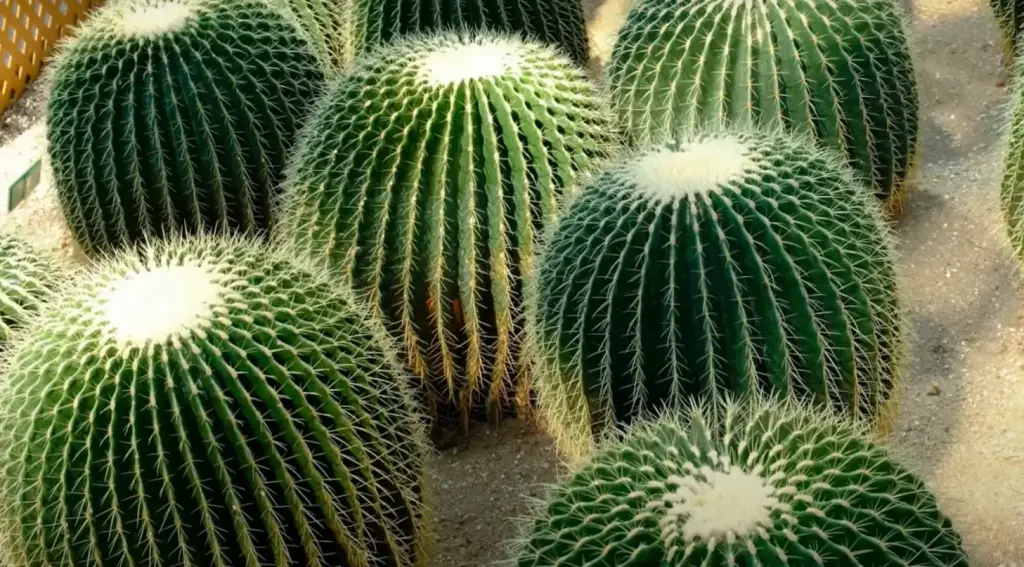
Finally, hardscaping features such as walkways, retaining walls and decorative features can help you create a dynamic garden space. You can also include wall art, ornaments, fire pits, bird baths, water features and other eye-catching elements to make your desert oasis truly unique. Choose materials that complement the natural environment around you for the best effect. [4]
With careful planning and consideration of the climate and vegetation needs in mind, you can transform your outdoor space into a beautiful desert paradise!
What is a desert garden?
A desert garden is a type of landscaping that uses plants native to arid climates. It requires special techniques for water conservation, avoiding soil erosion and maximizing the available sun exposure. The result is an attractive landscape with minimal maintenance needs that blends in with the natural environment.
These gardens are popular in areas like the Southwestern United States, which have hot and dry climates. In fact, many people choose this type of landscaping to create a low-maintenance outdoor space in their front or backyard. Desert gardens are also becoming increasingly popular in other parts of the world as well. [5]
Useful Video: 33 Inexpensive Desert Landscaping Ideas For a Perfect Drought-Tolerant Garden
Conclusion
Now that you have a good understanding of high desert landscaping ideas, you’re in a great place to start creating the perfect outdoor living space for your home. Whether you choose to go with all native plants or combine them with other types, be sure to consider the amount of water and sunlight each plant will need. And don’t forget about choosing materials that are appropriate for the area too! With a little bit of planning and creativity, you can create an inviting landscape that’s sure to make both you and your guests happy.
Happy gardening!
References:
- https://www.moananursery.com/2022/06/06/designing-your-high-desert-garden/
- https://www.makingmanzanita.com/high-desert-landscaping-ideas/
- https://www.homedit.com/desert-landscape/
- https://www.gardeningknowhow.com/special/spaces/desert-garden-ideas.htm
- https://www.buckinghamshirelandscapegardeners.com/news/how-to-make-a-desert-garden-in-any-climate





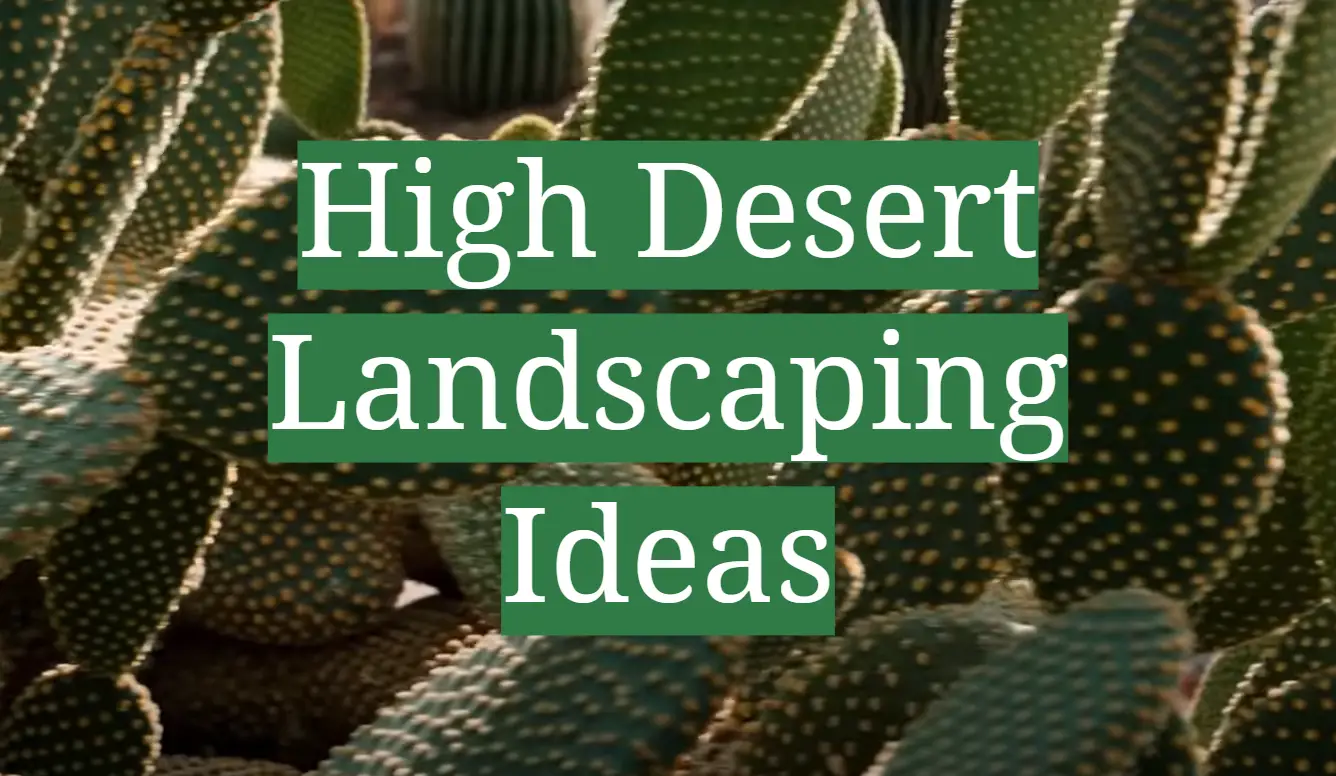




Leave a Reply
View Comments